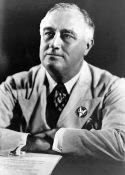
Jan Goggans, California on the Breadlines: Dorothea Lange, Paul Taylor, and the Making of a New Deal Narrative (Berkeley: University of California Press, 2010).
from the press:
California on the Breadlines is the compelling account of how Dorothea Lange, the Great Depression’s most famous photographer, and Paul Taylor, her labor economist husband, forged a relationship that was private—they both divorced spouses to be together—collaborative, and richly productive. Lange and Taylor poured their considerable energies into the decade-long project of documenting the plight of California’s dispossessed, which in 1939 culminated in the publication of their landmark book, American Exodus: A Record of Human Erosion. Jan Goggans blends biography, literature, and history to retrace the paths that brought Lange and Taylor together. She shows how American Exodus set forth a new way of understanding those in crisis during the economic disaster in California and ultimately informed the way we think about the Great Depression itself.
 Linda Gordon, Dorothea Lange: A Life Beyond Limits (New York: W. W. Norton, 2009).
Linda Gordon, Dorothea Lange: A Life Beyond Limits (New York: W. W. Norton, 2009).from the press:
.Winner of the 2010 Bancroft Prize and the 2009 Los Angeles Times Book Prize in Biography: Dorothea Lange’s photographs define how we remember the Depression generation; now an evocative biography defines her creative struggles and enduring legacy.
We all know Dorothea Lange’s iconic photos—the “Migrant Mother” holding her child, the gaunt men forlornly waiting in breadlines—but few know the arc of her extraordinary life. In this sweeping account, renowned historian Linda Gordon charts Lange’s journey from polio-ridden child to wife and mother, to San Francisco portrait photographer, to chronicler of the Great Depression and World War II. Gordon uses Lange’s life to anchor a moving social history of twentieth-century America, re-creating the bohemian world of San Francisco, the Dust Bowl, and the Japanese American internment camps. She explores Lange’s growing radicalization as she embraced the democratic power of the camera, and she examines Lange’s entire body of work, reproducing more than one hundred images, many of them previously unseen and some of them formerly suppressed. Lange reminds us that beauty can be found in unlikely places, and that to respond to injustice, we must first simply learn how to see it.



















No comments:
Post a Comment